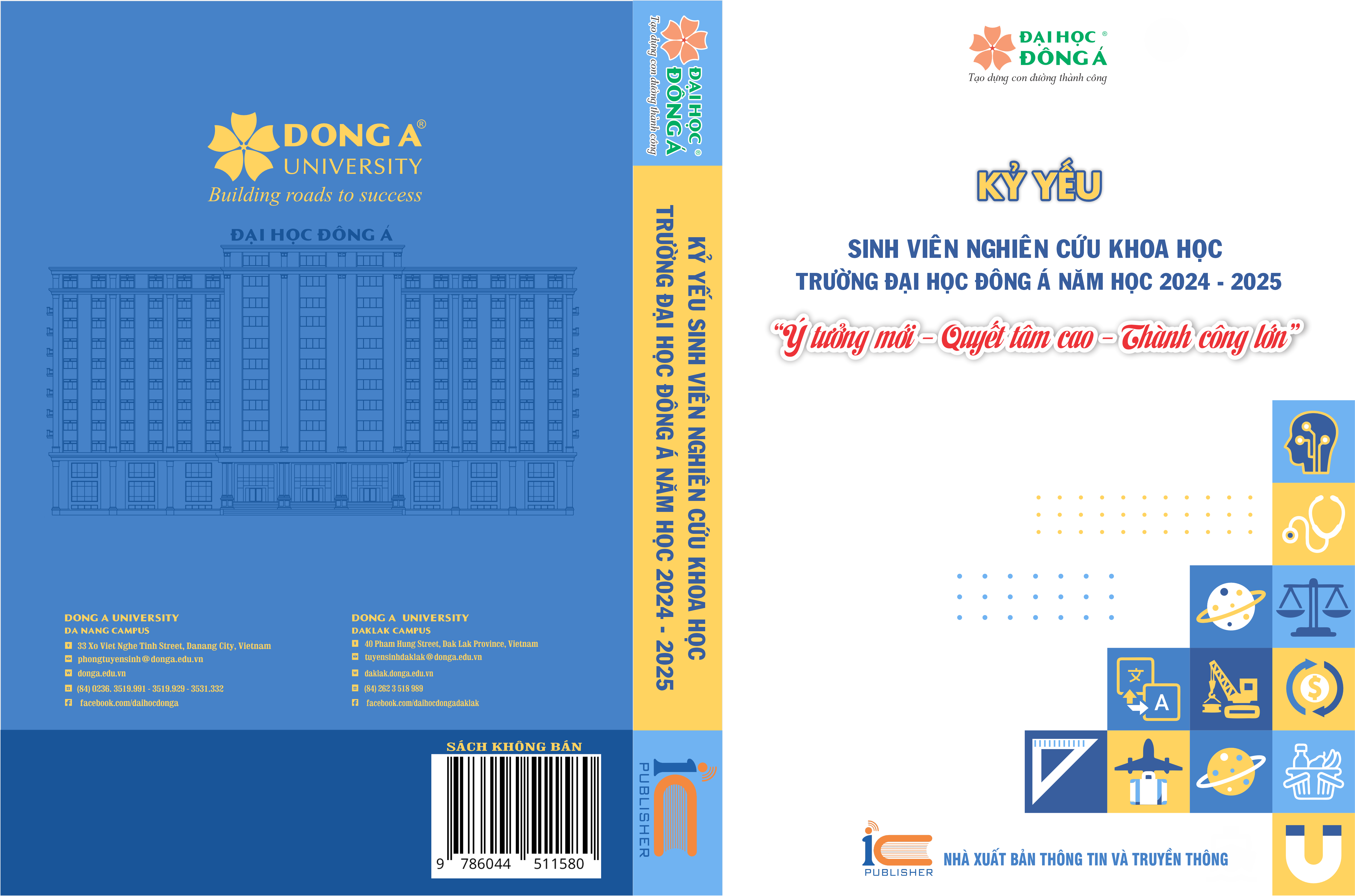AN INVESTIGATION INTO THE USE OF COHESIVE DEVICES IN B1 WRITING OF NON-ENGLISH MAJORED JUNIORS AT DONG A UNIVERSITY AND SUGGESTED SOLUTIONS
Nội dung chính của bài viết
Tóm tắt
This study investigates the use of cohesive devices among third-year non-English major students at Dong A University, specifically in their B1 level writing. A survey involving 100 students was conducted to assess their frequency of use, opinions on five types of cohesive device, and the challenges they face in academic writing. The data collected was analyzed using both quantitative and qualitative methods. A total of 100 midterm essays were reviewed to validate the survey findings. To enhance the reliability and objectivity of the research, feedback from several experts, including B1 instructors, was gathered regarding the curriculum, students' usage of cohesive devices, and their accuracy in application. The results reveal a strong correlation between students' use of cohesive devices and the teaching methods employed by instructors. Despite the frequency of usage, students often encounter difficulties and make errors when utilizing these devices. Based on the findings, the study aims to provide practical recommendations and solutions from educators, along with academic research, to equip third-year non-English major students at Dong A University with effective techniques and skills for using linking words in their B1 level writing. Ultimately, the goal is to enhance the students' writing proficiency by improving their ability to use cohesive devices effectively.
Chi tiết bài viết

This work is licensed under a Creative Commons Attribution-NonCommercial-NoDerivatives 4.0 International License.
Từ khóa
B1 Writing, Non-English majored juniors, Dong A University, current status, challenges
Tài liệu tham khảo
Amperawaty, A. (2019). The use of cohesive devices in the background section of the students’ formal writing, 9(1), 1–153.
Bell, J. (2005). Doing your research project: A guide for first-time researchers in education, health and social science (4th ed.). Berkshire: Open University Press.
Bloor, T., Bloor, M., Bloor, T. and Bloor, M. (2004). The functional analysis of English. 2nd Ed. London: Routledge Press. DOI: 10,4324/9780203774854.
Cambridge University Press & Assessment. (2024). Assessing Writing for Cambridge English Qualifications: A Guide for Teachers B1 Preliminary for Schools.
Darweesh, A. D., & Kadhim, S. A. H. (2016). Iraqi EFL learners' problems in using conjunctions as cohesive devices. Journal of Education and Practice, 7(11), 169–176.
Duffy, J. (2021, May 6). Coursera Review. PCMag. Retrieved April 10, 2025, from https://www.pcmag.com/reviews/coursera
Ferris, D. R. (2003). Responding to Student Writing. New York: Bedford/St. Martin's.
Granger, S., & Tyson, S. (1996). Connectors usage in the English essay writing of native and non-native EFL speakers of English. World Englishes, 15(1), 17–27.
Halliday, M.A.K. and Hasan, R. (1976). Cohesion in English. English Language Series. London: Longman.
Indriani, L. (2012). The cohesive devices in monolog discussion texts. English Education Journal, 2(2). Retrieved 11 1, 2024 from https://unnes.ac.id
Jafarpur, A. (1991). Cohesiveness as a basis for evaluating compositions. System 19(4), 459–465. DOI: 10,1016/0346-251x(91)90026-l
Johns, A. M. (1980). Cohesion in written business discourse: Some contrasts. The ESP Journal, 1(1), 35–43. DOI: 10,1016/0272-2380(80)90008-6
Nguyen, P. H. (2024). Challenges Vietnamese EFL Students Faced When Learning and Meeting the Requirements of B1 English Language Proficiency. Journal of Language Teaching and Research, 15(3), 893-901. DOI: 10,17507/jltr.1503.22
Nhung, N. T. H., Anh, T. T. Q., & Phuong, D. H. (2019). Common errors in students’ writing part II, 3rd term final exam, in Thai Nguyen University of Medicine and Pharmacy, and solutions. TNU Journal of Science and Technology, 209(16), 42-47.
Quirk, R., Greenbaum, S., Leech, G., & Svartvik, J. (1985). A comprehensive grammar of the English language. London: Longman.
Quynh, N. T. N. (2018). A Study on the Validity of the VSTEP Writing Test to Contribute to the Process of International Integration. Foreign Studies Journal, 34(4), 115-128. DOI: 10,25073/2525-2445/vnufs.4285.
Ramadan, M. (2019). Basic Ideas and Techniques for Teaching the Four Language Skills. English Language Teaching & Testing Guide © 2019/2020,
Sapsford, R., & Jupp, V. (1996). Data collection and analysis. Published in association with The Open University. London: SAGE.
Silva, T. (1993). Toward an understanding of the distinct nature of L2 writing: The ESL research and its implications. TESOL Quarterly 27(4), 657–677. DOI: 10,2307/3587400
Tamm, S. (2023, January 16). An honest review of Coursera in 2023: Pros, cons & alternatives. E-Student. Retrieved April 10, 2025, from https://e student.org/coursera-review/?utm_source=chatgpt.com
Thao, N. T. P. (2018). A Study on the Content Validity of the Reading Test in the Format of English Proficiency Assessment Levels 3-5 (VSTEP 3-5). Foreign Studies Journal, 34(4), 129-143. DOI: 10,25073/2525-2445/vnufs.4286.
Uru, O. B., Sudirman, A., & Nugroho, A. D. (2021). Exploring Cohesions in EFL Academic Writing: A State of the Art on the Study of Cohesions. Elsya : Journal of English Language Studies, 3(2), 141–149. DOI: 10,31849/elsya.v3i2.6730
Yule, G. (2022). The Study of Language (8th ed.). Cambridge University Press.
Zhang, L.J. (2000). Uncovering Chinese ESL students’ reading anxiety in a study-abroad context. Asia Pacific Journal of Language in Education 3(2), 31–56.


